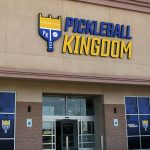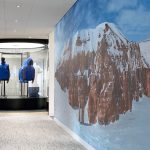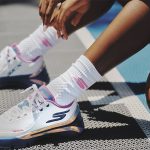With Halloween just around the corner, sugar may still get a bad rap when it comes to health and dental hygiene. But outdoor manufacturers are finding it plenty sweet as an eco-friendly material for certain products. Picture, Allbirds and Big Agnes are using the sustainable material in their offerings.
Picture first began using sugarcane waste to make polyester for its products in 2020. The advantage, said the company’s sustainability and transparency manager Florian Palluel, is that it requires less petroleum to make the finished product.
Traditional technical polyester (PET) consists of “30 percent mono-ethylene-glycol (MEG) and 70 percent terephthalic acid, both petrochemical compounds.” Plants that contain sucrose such as beets and sugarcane, or starch, such as wheat and corn, can be “transformed into bio-mono ethylene glycol (Bio-MEG) to replace conventional petroleum-based MEG.” The result, said Pallue, uses “30 percent less fossil fuels, a leading contributor to climate change.”
“There are several benefits to using sugarcane waste to make PET, but they all come down to the same bottom line, reducing our environmental impact to create a material that maintains the same level of performance as those derived from petroleum,” Palluel said. “Bio-polyester has exactly the same chemical composition as conventional polyester, it’s just the source that differs. So, we’re able to reduce the amount of oil required to make our technical outerwear while not negatively affecting the quality or performance.”
For FW21, Picture’s Expedition Line is made with bio-sourced polyester, with the line’s jackets and pants also using Picture’s 20k/20k Dryplay recyclable membrane and a PFC-free DWR treatment.
Allbirds, founded by New Zealand native Tim Brown in 2014, first made waves with sugarcane with its SweetFoam, sourced from southern Brazilian sugarcane, to create midsole for its Sugar Zeffers flip-flop. Reporting that the footwear industry “releases 700 million tons of carbon waste every year,” it didn’t patent the eco-friendly sole in hopes other companies would also adopt the technology. Made with the “world’s first carbon-negative green EVA,” the company has since added its sugarcane-based SweetFoam sole to its sneakers and slip-on shoes. It also recently debuted an activewear collection made from eucalyptus tree fiber instead of oil-based polyester and a shirt made from discarded crab shells. With celebrity investors and ambassadors, the company is currently valued at “$1.7 billion and is slated for an initial public offering later this year.”
Big Agnes recently debuted a process using TwisterCane closed-cell foam made from Brazilian sugarcane extract in a carbon-negative process for its sleeping pads to reduce energy, wastewater and chemicals. Its closed-cell foam TwisterCane BioFoam Pad and Hiking Seat “incorporate more than 60 percent sugarcane extract, which is fully renewable and helps reduce the dependence on Ethylene-Vinyl Acetate (EVA) while maintaining function, durability and warmth,” said the brand.
“We’ve been surprised by the interest in it,” said Big Agnes co-owner Len Zanni. “Orders for them have outpaced our original forecasts. It’s exciting to see both wholesale buyers and camping consumers take interest in a pad made with sugar cane extract. We work hard to source sustainable materials but when you can do it with staple products like closed-cell foam pads with good scale it makes it even more meaningful.”
Big Agnes president Bill Gamber added that it’s one step along the way toward becoming greener. “We’ve been focused on incorporating more sustainable materials into our products for years, but this year marks a big change, with both our use of sugarcane and our solution-dyed tents,” he said. “We’re trying to think about sustainability holistically from where and how materials are made to what they’re packaged and shipped in.”














